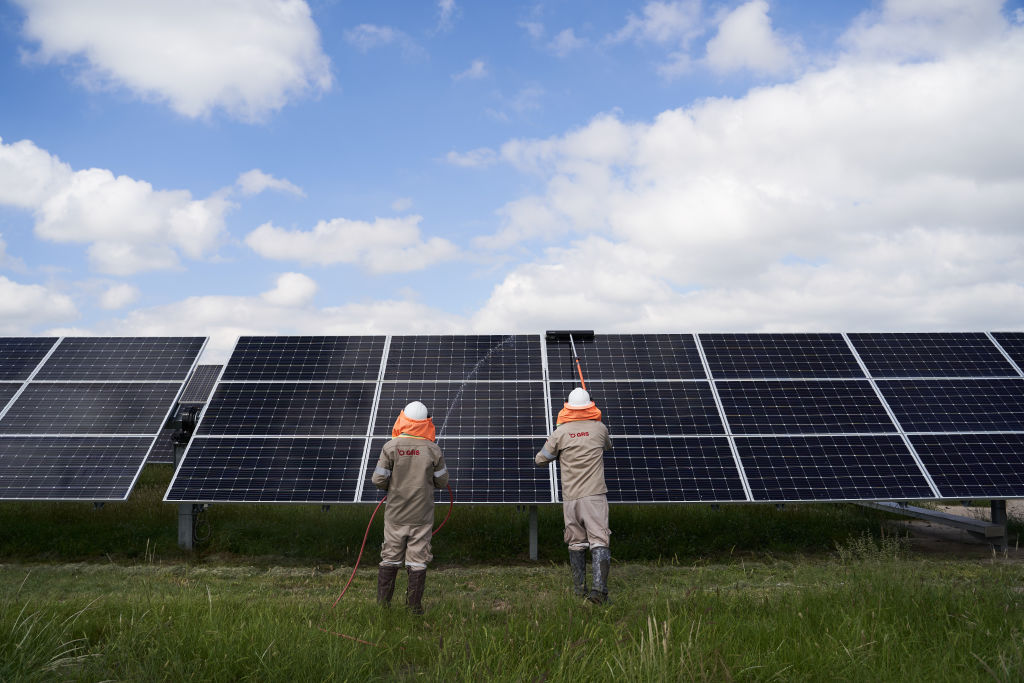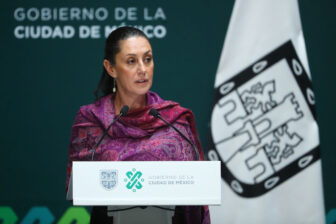MEXICO CITY – The U.S. government has in recent weeks put in no uncertain terms its concern over President Andrés Manuel López Obrador’s proposed overhaul of the Mexican energy sector.
On Jan. 24, speaking after a recent visit to Mexico City, U.S. Energy Secretary Jennifer Granholm noted that the proposal, if left unchanged, would “not create a level playing field” for U.S. investors. An earlier statement noted the Biden administration’s “real concerns” over the plan, both for investment and renewable energy.
To be sure, Granholm also said she saw “openness” on the part of the Mexican government to resolving those issues. But the parts of the plan that appear to give the U.S. most pause are precisely those that go furthest in achieving López Obrador’s long-term goals. The risks to international investment are features of his proposal, not flaws.
López Obrador treats the expropriation of Mexico’s oil sector in 1938 almost as a national holiday, and has long called privatization, which came to fruition in 2013, a “betrayal of the homeland.” He is eager for a return to an energy sector that is closed to private investment and isolated from international trade.
This proposal would give him exactly that, for three main reasons:
Uncertainty over existing contracts
The most obvious risk to investors from López Obrador’s plan comes from the fact that it would cancel existing electricity generation permits and sales contracts. This would be the case for private actors whether they are providing energy to state electricity company CFE, satisfying their own energy needs (self-generation) or selling excess electricity back to the grid.
For López Obrador, these steps are justified by what he views as the corrupt, unfair or self-serving nature of the contracts negotiated under his predecessor. But the text of his proposal does not establish any cause for termination and would appear to violate the principle of non-retroactivity and the constitutional guarantee of due process. It’s unclear how or if the government would plan to renegotiate or compensate affected producers. Not exactly a welcome mat for future investment.
Threats to competitiveness
An even deeper challenge comes from new limits placed on private producers’ ability to compete with CFE. Today, private producers account for 62% of Mexico’s electricity market. López Obrador’s proposal would place a limit on private generation of 46%. Even then, private participation would come through contracts with CFE, and be at the state utility’s discretion.
In addition to guaranteeing CFE a minimum of 54% of the generation market, the proposal would also make it the proprietary owner of what is today Mexico’s independent system operator, CENACE. That means CFE itself would decide when and from where electricity is distributed. The reform would exempt electricity from Article 134 of the Mexican constitution, which obliges the government to prioritize economic competition in public acquisitions or leasing contracts.
Finally, the initiative would eliminate the legal concept of Productive State Enterprise, and make CFE an administrative organ of the state. It would be considered, constitutionally, a non-monopoly despite operating under anti-competitive practices. This means that CFE (and, incidentally, Pemex) would no longer be legally obligated to pursue sustainability and profitability – putting private producers at a clear disadvantage, and threatening even the 46% market share that they are theoretically allowed.
Project viability
A final key element of López Obrador’s reform that would have profound effects on competitiveness and investment is a change in dispatch priority, or the order in which electricity from public and private providers is taken onto the grid. The current system, in which lower marginal-cost electricity is given priority regardless of its source, favors renewable energy production, the vast majority of which is now owned by private companies. Under the new system, and with CENACE no longer independent, CFE generation would be given priority, and only public-sector generation would be dispatched according to production cost. The order for private sector generation remains unclear.
A recent study from the U.S. government’s National Renewable Energy Laboratory suggests that this change would increase electricity costs by up to 52.5%, have detrimental effects on the environment, and allow CFE to expand its market share beyond 54%. If this is indeed the case, it would by definition jeopardize the profitability and viability of private sector projects for shareholders, creditors and companies.
The effects of placing more importance on the control of state assets than on efficiency are clear. In the four years after the Mexican energy sector was opened to private investment (2014-2018), foreign direct investment (FDI) in the sector reached $9.9 billion, or 64% of total FDI in the sector in the last 20 years, according to the Mexican Secretary of Economy. But López Obrador’s government has put administrative brakes on private investment – including halting, complicating or prolonging renewable permit and authorization processes – and FDI in the sector registered just $582 million through the first three quarters of 2021. In two years, Mexico has fallen nine places on Ernst & Young’s Renewable Energy Country Attractiveness Index.
Beyond the immediate and long-term risks to investors, the proposal would also inspire a host of legal and constitutional challenges. In addition to potentially violating Chapter 14 of the USMCA (which protects investors), it may also violate Chapter 22, which details the conditions under which state-owned companies must operate to guarantee good governance. This includes a clear policy for state property, acting in accordance with the laws of economic competition to guarantee neutrality and fair play in markets, high levels of corporate transparency, effective boards, and greater professionalization in the publication of financial information. Changing CFE’s legal status alone will not exempt Mexico from complying with Chapter 22 and its equivalent World Trade Organization obligations.
López Obrador’s proposed reform is central to his view for Mexico’s future. He will not cede ground easily. But the most destructive elements of his plan can be avoided. The stakes may be high for U.S. and international investors; they are far higher for Mexico.
—
Moreno is the Competition and Economic Regulation program coordinator at México Evalúa







